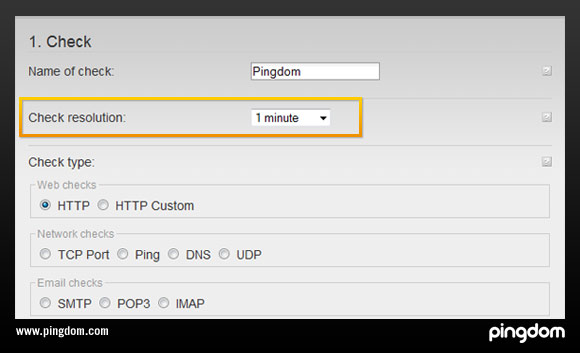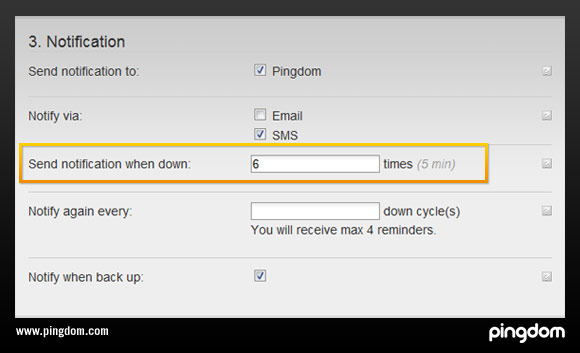Pingdom was made to directly alert our users of any downtime that might occur on servers and websites. But in many cases it’s a good idea to configure your Pingdom checks to first wait for a while and only alert you if the downtime continues.
Temporary errors do happen
But why wouldn’t you want to be informed the same second your website experiences downtime?
Well, first of all it’s good to know that the Internet isn’t always as stable as one could think; this is mostly due to its widespread infrastructure. By loading a website in a browser you’re almost always talking to at least a handful of different servers on the way.
The other and most important reason is that web servers can have temporary issues for a short period of time. Some examples are if backups are performed at a certain time of day which affects the server’s performance, maintenance windows where the server administrator is working with the server, temporary high load and restarts of the web server (in some cases this might be done automatically using scripts that monitor the server).
These kinds of issues are often called “false positives”, but in reality they are real errors. It’s just that they often go away by themselves so quickly that by the time you sit at your computer they are already gone.
Our suggested check configuration
We highly recommend that you always use a check resolution of 1 minute, meaning that we will test your website once every minute. Web servers are built to handle lots of requests, so checking it once every minute will not affect your web server performance or the bandwidth usage much. Checking every minute also means that you will collect more detailed data and lets you configure alerts with higher accuracy.

Now let’s look at the important part of configuring alerts. This is where you set how and when to be alerted. In our suggested setup we are going to get a SMS (text) every time our website is down for more than 6 times. Since we have selected a check resolution of 1 minute the alert will be sent after 5 minutes of continuous downtime.

We also selected to be alerted when our website is back up again. Using the “notify again every” option you can also receive additional reminders to make sure that no alert goes unnoticed.
Uptime still matters
Even though we think that maintaining a high uptime is very important, it might be wise to only be alerted on errors that are critical and don’t seem to be temporary.
This is especially true if you value your beauty sleep and don’t want to be woken up only to find your site working again.
It should be noted that we have something we call “second opinion” to filter out false alerts due to any local network issues. It works by always having a second server double-check a downtime from another location before we consider the website as down. But the second opinion will not filter out alerts where a temporary issue is happening on the web server such as the case we were discussing in this post.



























